Guide to selecting a car Roof Top tent to suit your needs, budget, car and taste.
Is camping in a Car roof top tent on your mind? Have you ever felt the urge to stay very close to a beach or a lake or a river stream in the middle of the jungle? Have you ever seen those Facebook posts, Instagram Reels, or youtube videos of groups camping in the outback and thought are rooftop tents safe? And still felt like doing it?
If so, has it made you think about what budget you should buy a Car rooftop tent for? Have you wondered where to buy it?
Whatever could be your reason, here is a guide to selecting a Car Roof Top Tent (CRTT) for your next trip.
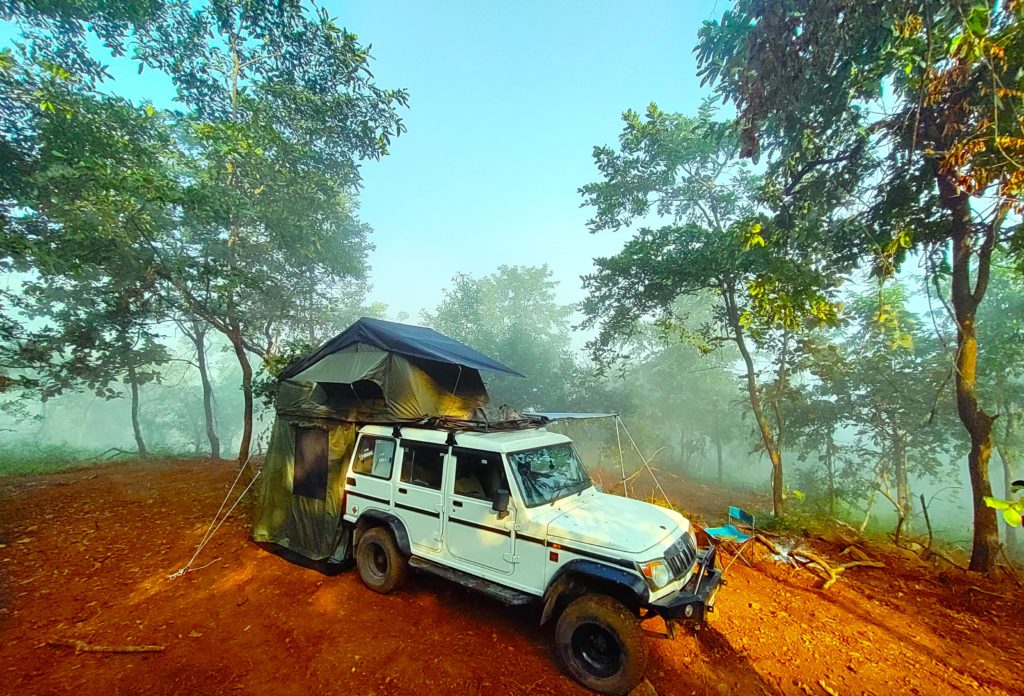
Use / Application
Weekend camping / Long duration Expedition
While there should be no reason to buy a Car Roof Top Tent than it being fun and sure to excite your kids and buddies on the trail. when it comes to making a choice and zeroing upon a product, you need to consider your kind of use of it.
You can take the tent on a weekend tour, or you might want to plan a multi week expedition into the mountains. Apparantly the tents are supposed to offer a facility to camp, but they will certainly differ in their feel and features.
A weekend camp might not need you to choose a specific product. But, a longer tour will expose the limitations as you spend more time with it in more demanding situations.
While most of the products on the market today are waterproof and offer all-weather performance, it is good to check and verify the same with the supplier or seller.
In general, Entry level tents are good for recreation and weekend camps. If you are considering making it your home over a longer duration, choose one that can offer you space, ease of opening, weather performance, and durability in that order.
Weight of the tent
The tent weight is the most crucial factor and depends on the Materials used in making them. Fabric is common for soft shell and hard shell tents. And there are also other materials like Aluminium, and FRP / GRP that are used depending upon the design.
While Aluminium and FRP /GRP materials ensure keeping the tents weight within the limit, they are costly. However, these materials guarantee excellent weather resistance making a safe tent vehicle combo.
It is no brainer that a lighter tent is always a safer tent. Heavier tents need extra care and the special systems for mounting them. Accordingly a few of these are explained in this article ahead. Tents weighing about 60% of the roof loading capacity may be considered safe.
For Eg. Hyundai Venue roof rails are rated at 70 kg, therefore a tent weight of up to 42KGs can be considered safe.
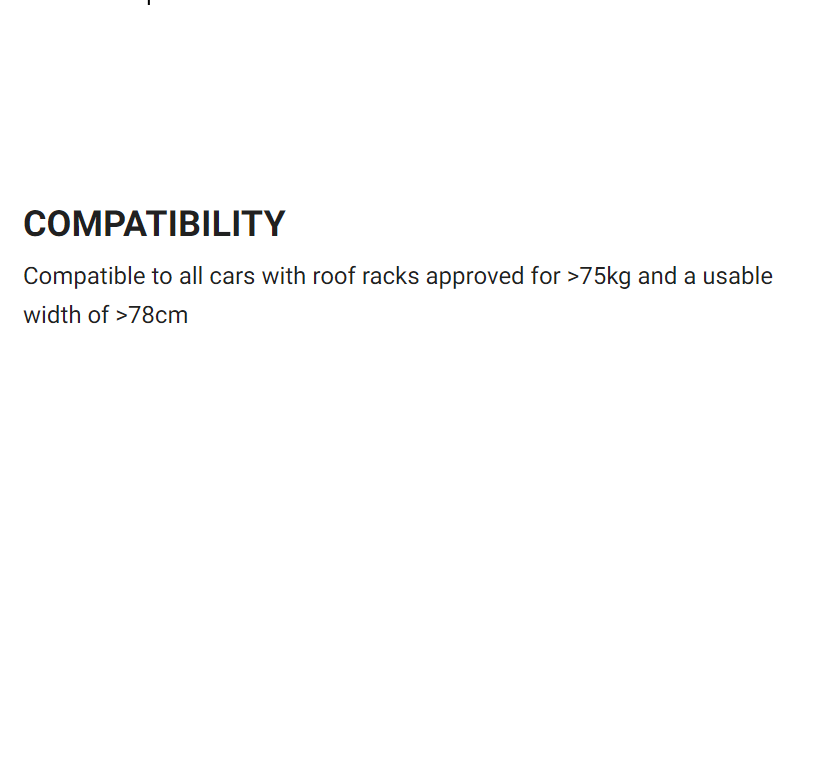
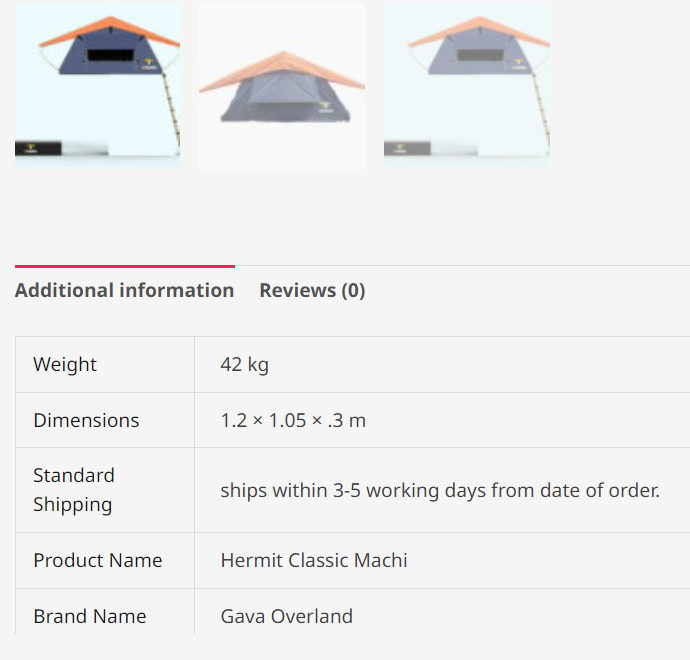
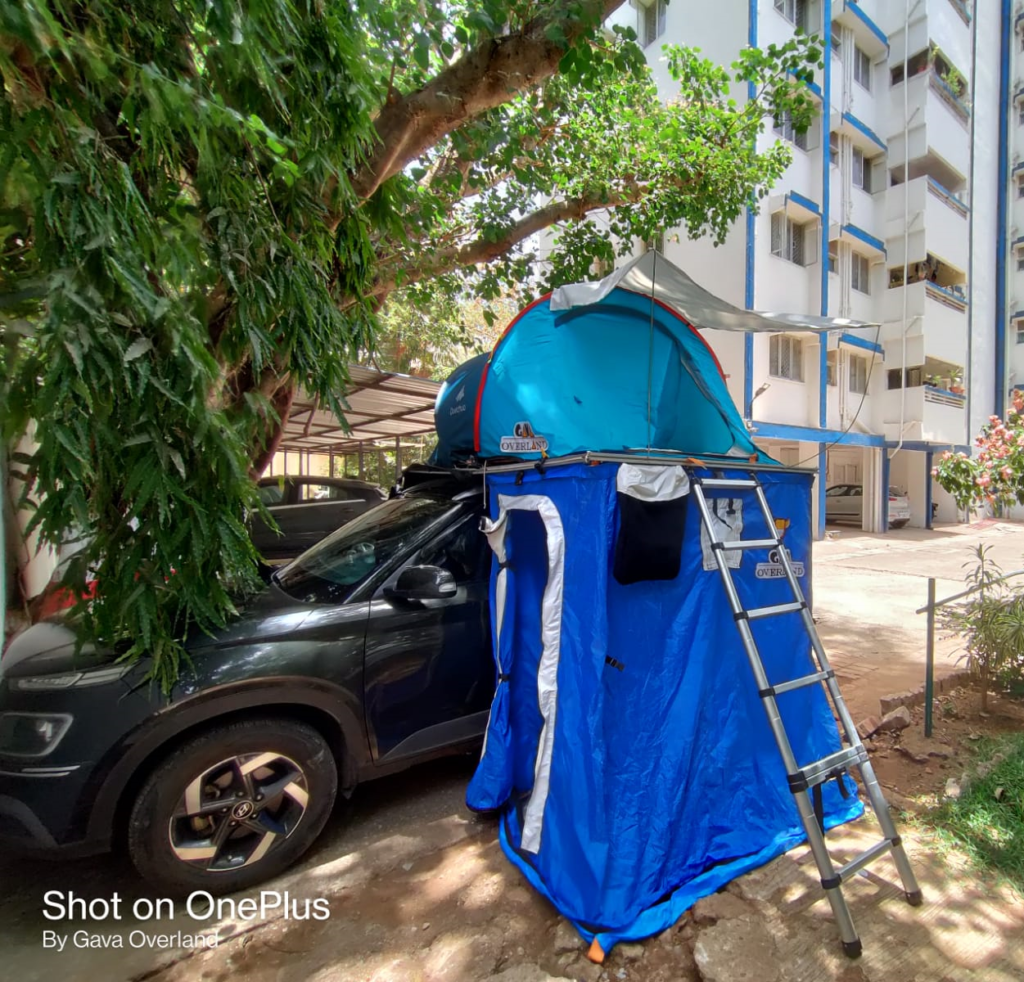
Base Vehicle
Once making up your mind to go ahead with a CRTT, the next question is what is that you drive? Interestingly the same tent can make sense for different sorts of vehicles ranging from Sedans, compact SUVs, MUVs, and off-roaders to Luxury SUVs, vans, and Caravans.
For any of these vehicles that you drive, the selection criterion is the roof loading capacity. The best bet to know about this is to find out with the Dealership of the brand or official literature available for your version of the vehicle. Many Automobile OEMs declare the “Roof Loading Capacity” of the vehicle. It is a good starting point to know Dynamic Roof loading capacity of your vehicle in KGs.
Keeping the Jargon aside, the base vehicle has to support the weight of the tent safely without or marginally affecting the dynamics of your vehicle over the speed ranges that it operates through. And it also needs to support the weight of the occupants + tent when the vehicle is stationary.
If we call the capacity to support when standing as Static and capacity to support when moving as Dynamic, the number that OEM will give you is by default Dynamic roof loading capacity.
It is quite funny, that even if it refers to the roof, the roof of the cars is too thin to support any load and keeps in shape by corrugation. The load is supported by the side structure connection A, B, and C pillars of the car.
There are four ways how you can mount the CRTT on a car.
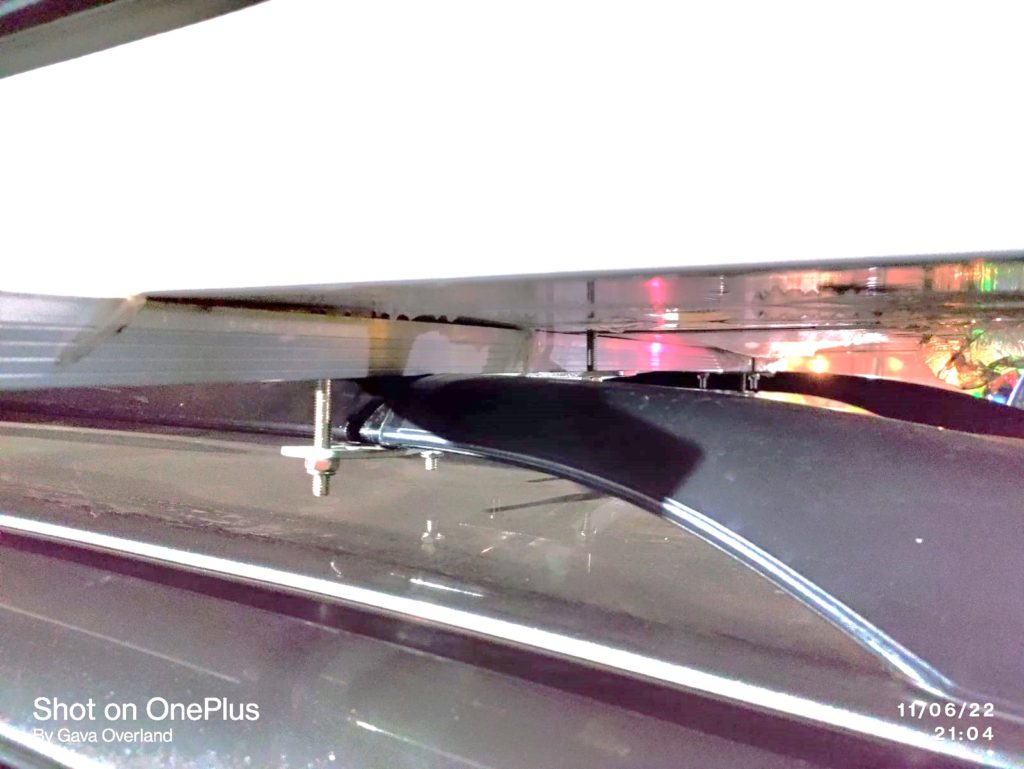
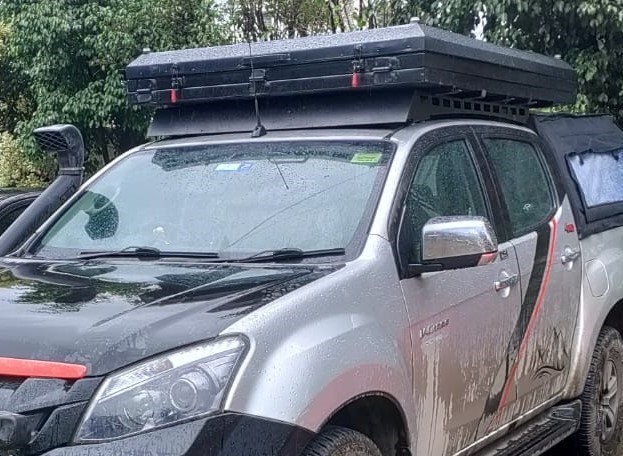
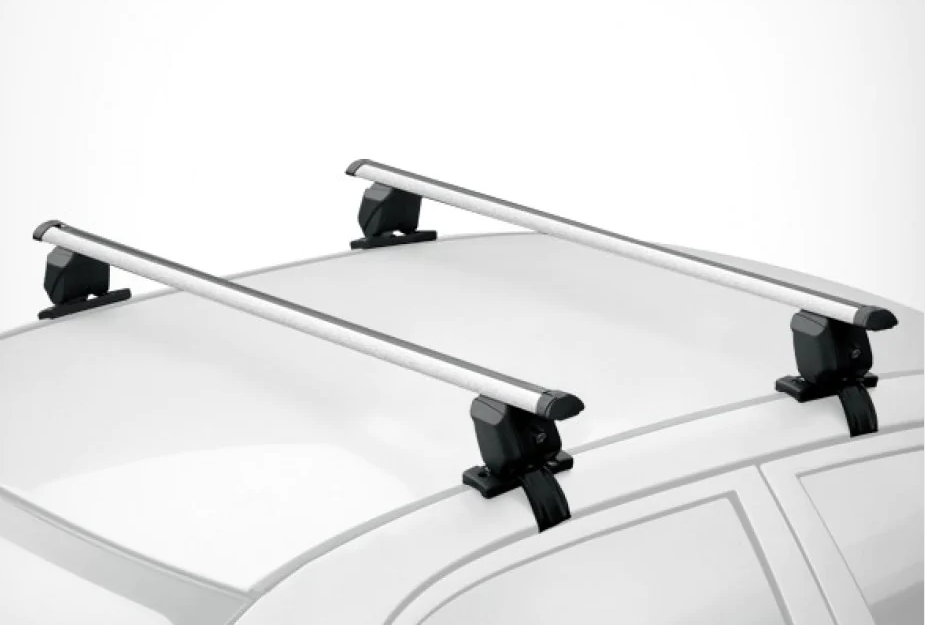
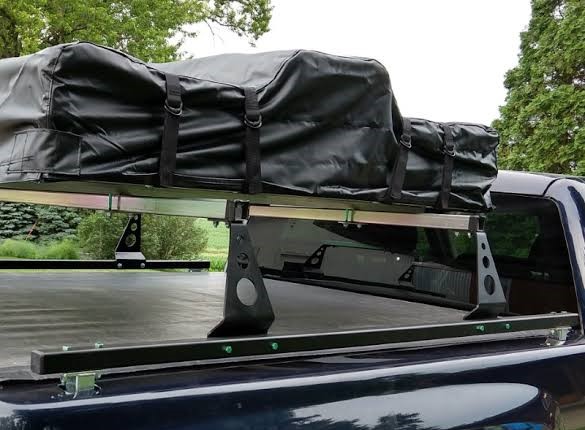
Factory Roof rails
Factory roof rails are load rated and can support soft shell tents safely. There are many cars in every segment that sport functional roof rails. Some vehicles that come with cosmetic roof rails indicate not to load them. CRTTs must not be mounted on cosmetic roof rails.
On top of Roof bars
For vehicles without roof rails, there are aftermarket load-certified roof bars available that are made specifically for these cars. They can support the load of the Rooftop tent and other accessories.
Custom Roofrack
Offroaders or vehicles made for long-distance expeditions need to mount additional accessories. To support this, the tent can be mounted on a custom roof rack. Generally, the roof rack helps to distribute the load better and is considered safer than other ways of mounting the accessories including the tent.
On the Loading Bay Rack
Some lifestyle trucks have loading bays and can host rooftop tents on top of the loading bay structure. These installations give those vehicles a very purposeful and rugged look. These are equally safe as custom roof racks. However, the loading bays being placed a little lower in height, they have limited space left below the tent platform to support an annex or as an additional shelter.
A quick guess can tell you that the above methods are also increasingly expensive with the roof bars, custom roof rack, and loading bay rack needing increasingly specialized and customized inputs and specialized manufacturing processes and materials.
In all of the above installation methods, the intent is to transfer the load of the occupants and the tent with accessories to the structural members of the body of the car and then to the chassis.
Buying a rooftop tent is like buying a white good. But, It is equally important that the mounting system is chosen carefully to ensure the safety of you and your car which probably would cost 10 times the tent.
Weather performance
Rains, Summer, Snow, Winter
The hassle of getting the tent is for providing a cozy bedroom after a hectic day on the road / off the road. This means the tent has to resist winds, low temperatures, heavy downpours, and snow at times.
The design of the tent and the material play an important role in ensuring its weather performance. Nowadays options like Oxford, Ripstop PU/PVC coated versions of polyester, and cotton fabric offer excellent water and wind resistance. The platform in Aluminum with air/wool would offers insulation when the cold tries to creep in from the bottom.
Soft shell tents should be double-layer with flysheet and body with joints appearing offset to each other for rains/water performance. There is a mix of geodesic and alpine designs of soft shell tents, that offer excellent wind and snow performance.
Hardshell ones with single-formed top pieces offer good water performance, however, hailstorms / heavy rains make it a noisy affair. They are also prone to accumulate more snow than the soft-shell ones due to the low degrees of the slope of the roof.
Ventilation and Condensation in Tent
Ventilation and condensation are the two aspects that impact the performance of a tent over a large range of ambient temperatures. A good tent has all-around ventilation with windows on all sides.
The most common way of ventilation in tents is thermal ventilation. When the occupants’ bodies release heat thermal flow gets established due to the difference in densities of cold and hot air. Cold air finds its way inside the tent and hot air leaves the tent from the top vents. A properly ventilated tent seldom faces condensation.
If ventilation is not proper, or there is a significant difference between the outer and inner temperature, the moisture tends to condense on the inner walls of the tent. This happens due to moisture inside the tent not finding its way out. It is a good idea to open the tents at least an hour before occupying them.
Forced ventilation with 12V fans is an advanced alternative. These Fans are to be installed on the vent at the top if used for ventilation. Alternatively, used focused on occupants they also help drive away the moisture generated by the bodies.
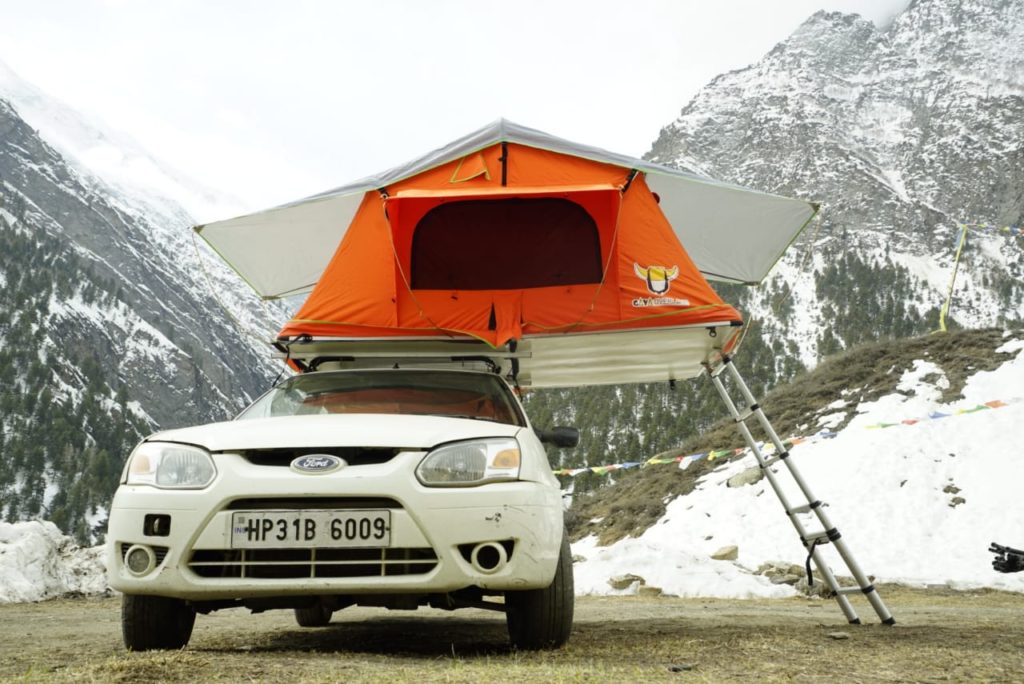
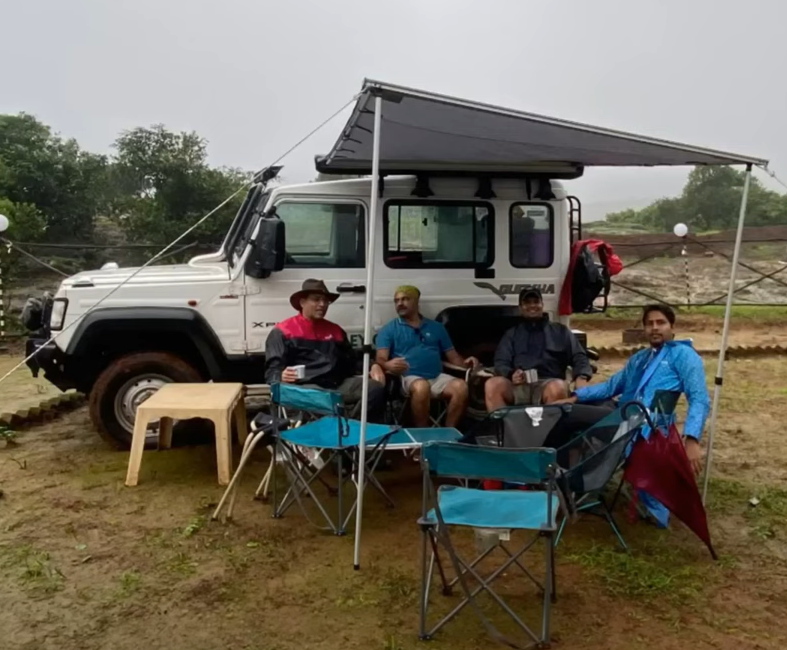
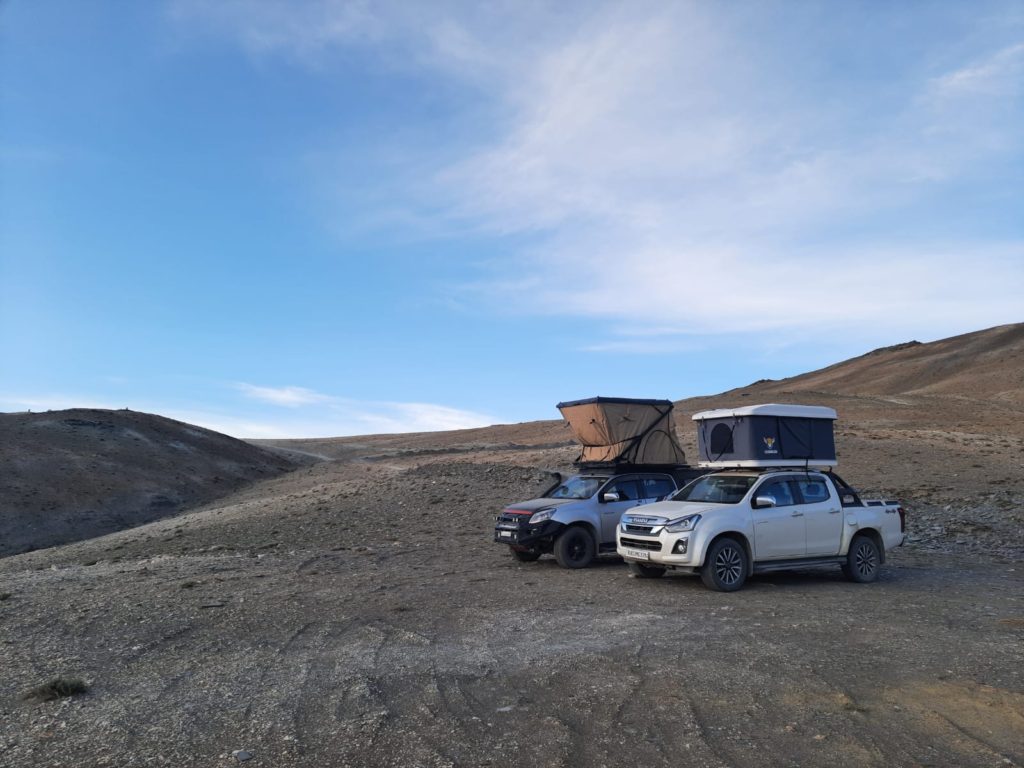
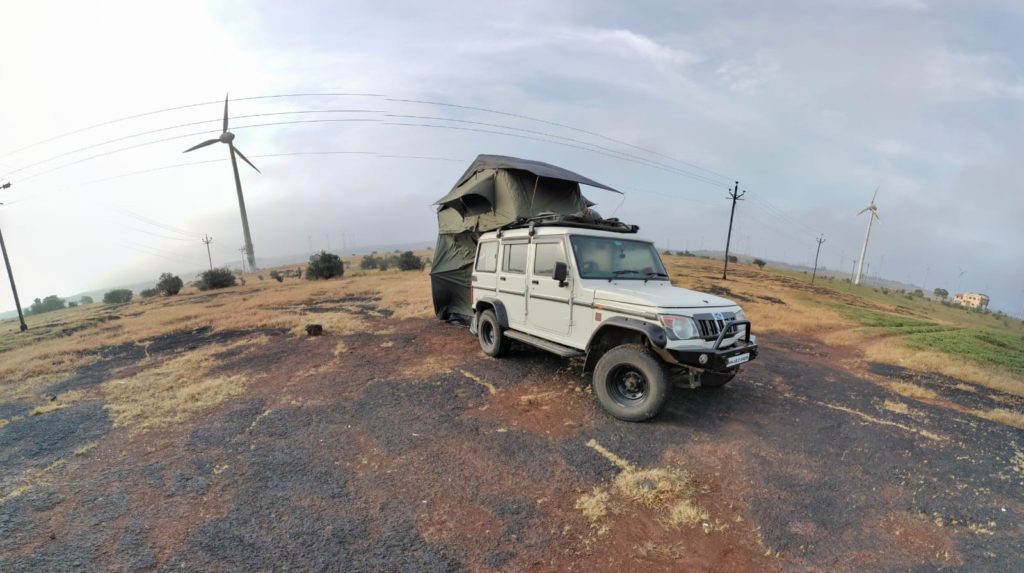
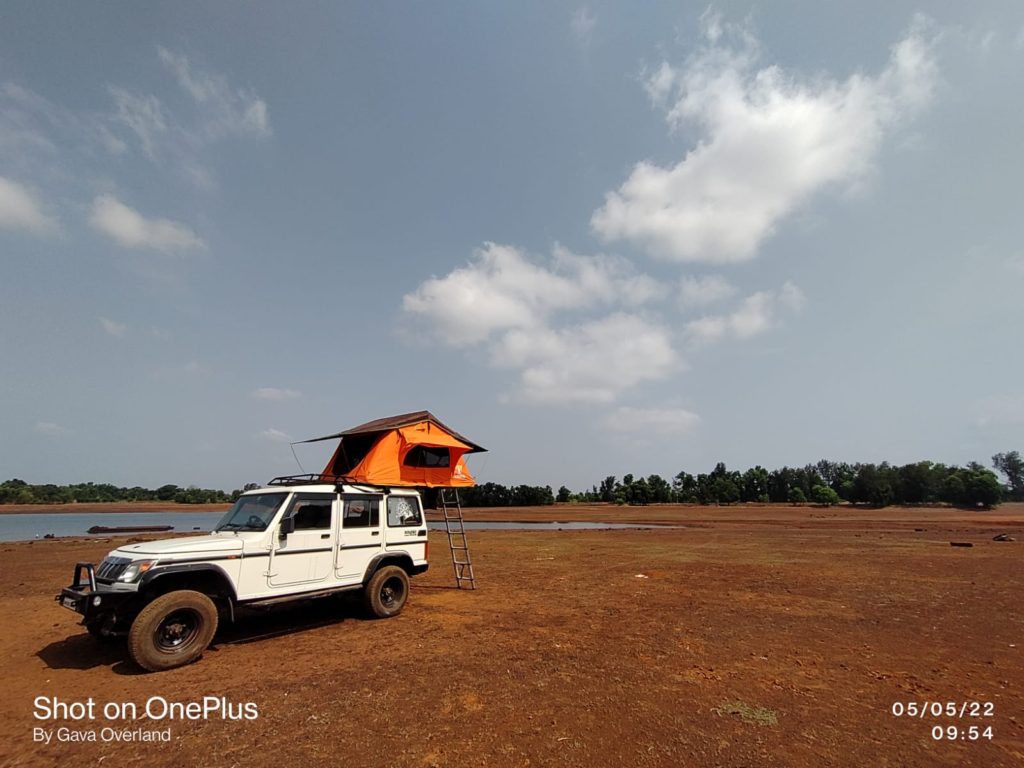
Number of Occupants
The tent sleeping area is normally designated for some adults. 2/3/4 people tents are common. Most Indian vehicles have sufficient roof space for 3/4 people with soft shell tents. A hard-shell tent by its nature can accommodate about 3 people.
Tent capacity also is linked to the capacity of the base vehicle as discussed above. It is advisable to limit the Tent occupants to up to 300Kgs of total weight. Tents meant for a longer duration of travel/stay also come with furnished rooms below the Platform. These rooms are called Annexes. They normally come with a floor and offer a similar level of camping safety as the tent. With an airbed in the Annexe, the sleeping capacity increases to 6 people.
Considering the occupant’s comfort, the sleeping area may be considered 1 person less. Meaning a 4 person tent has comfortable space for three adults.
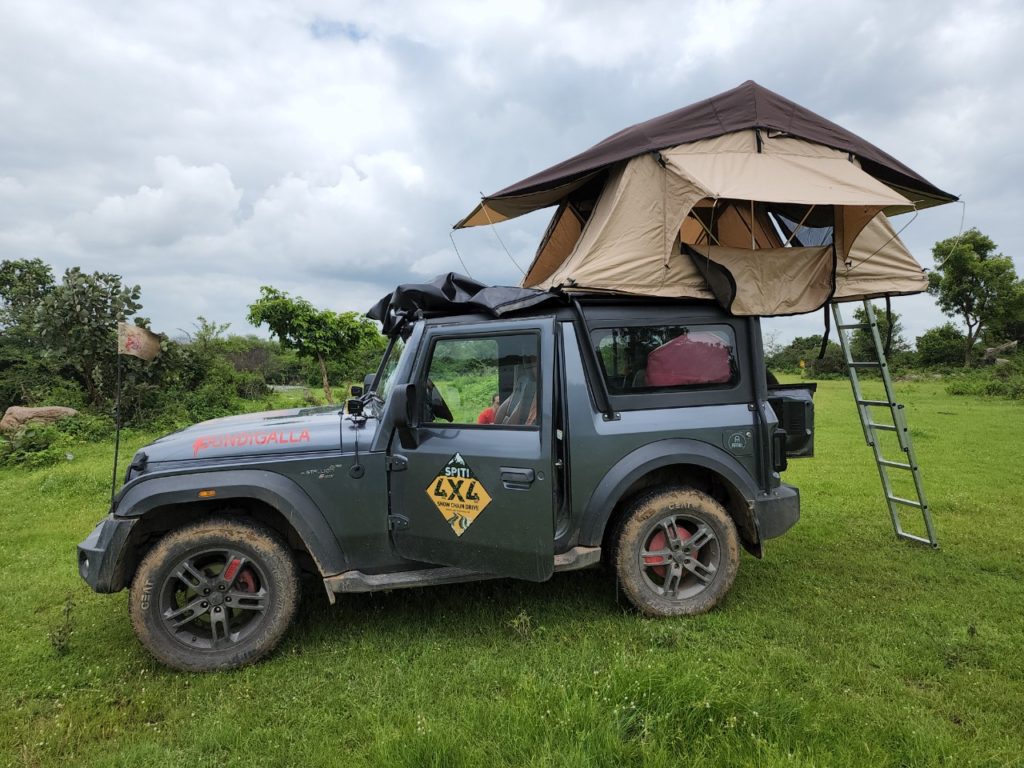
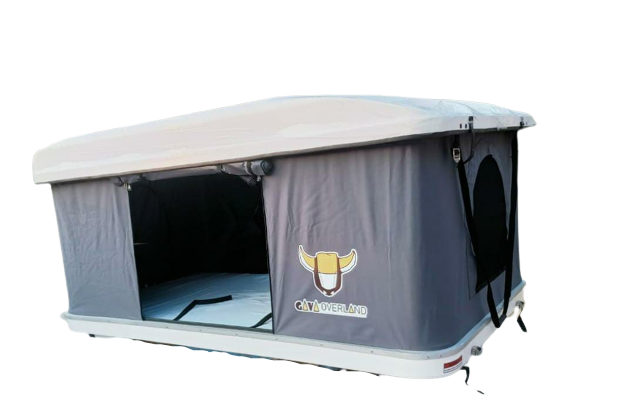
Type of Tent
There are some indicative types of tents discussed in this article before, but they need to be discussed to establish their pros and cons. There are two major types.
Soft Shell and Hard Shell.
Soft shell tents have fabric covers as the name implies and they normally fold out to make space to accommodate the height of the occupants. Due to this nature, They can be installed on vehicles considerably smaller in size. They form huts with sloping roofs in parallel or round shapes.
Hard Shell tents come in different configurations such as wedge tents, Hard Shell pop-up tents, Z tents, and so on. They also may have sky windows integrated with their roofs. They do not fold and offer complete 7-8 feet of sleeping space on the floor. Therefore, their installation is possible only on full-size MUVs, SUVs, Vans, and Pickup Trucks.
Generally, Soft-Shell tents are lighter in weight than hard-shell tents. As CRTTs make the vehicles top-heavy, off-road vehicles tend to go the soft-shell way. This helps them tackle the topsy turvy terrain with the lowest possible impact on the Centre of Gravity.
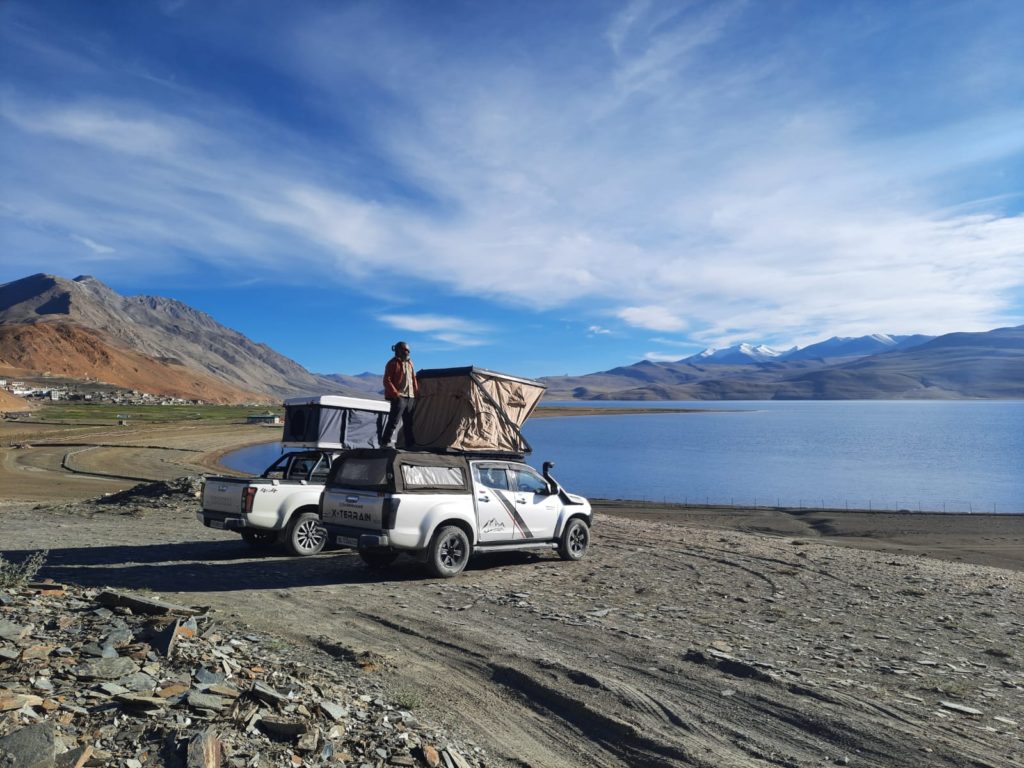
Budget
The most crucial element of selecting the CRTT is Budget. While there are myriad options in many price bands for CRTTs and while some of them are insanely priced, some are also dirt cheap. Advice helps one choose when the market is full of choices across the spectrum.
While allocating the budget for your choice, consider the above factors in the order they have been mentioned. If you have read until here and have choices for each one of the above on hand, then you can choose the one that ticks safety, capacity, and comfort in that order.
A good soft shell specimen for 2 people is good to buy around 60K INR ballpark, while 3 people one will be around 75K. Similarly, a lifestyle tent with Annexe might be a good buy for approximately 85K. A Hard Shell around 80K is also a good buy.
You can find range of Gava Overland tents at www.gavaoverland.com.
Features and Accessories
Many brands offer the ecosystem of other products that work with the tents. Choose a product that is compatible with these. For example – Annexe rooms, Awnings, LED lights, internal storage pockets, shoe bags, etc.
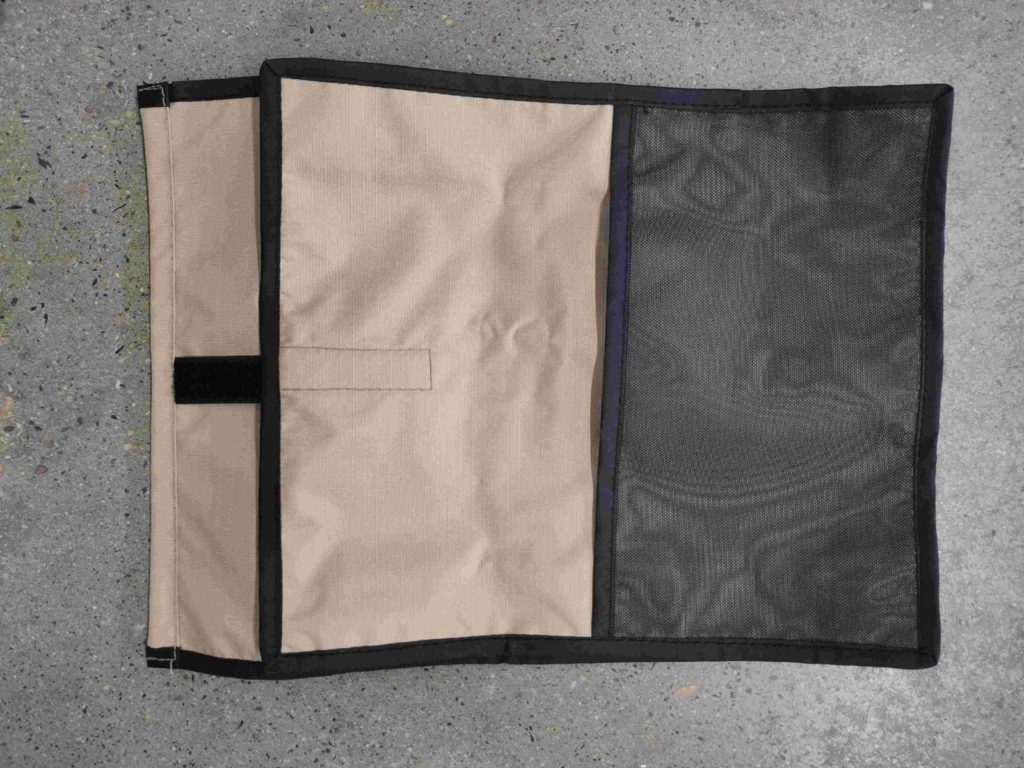
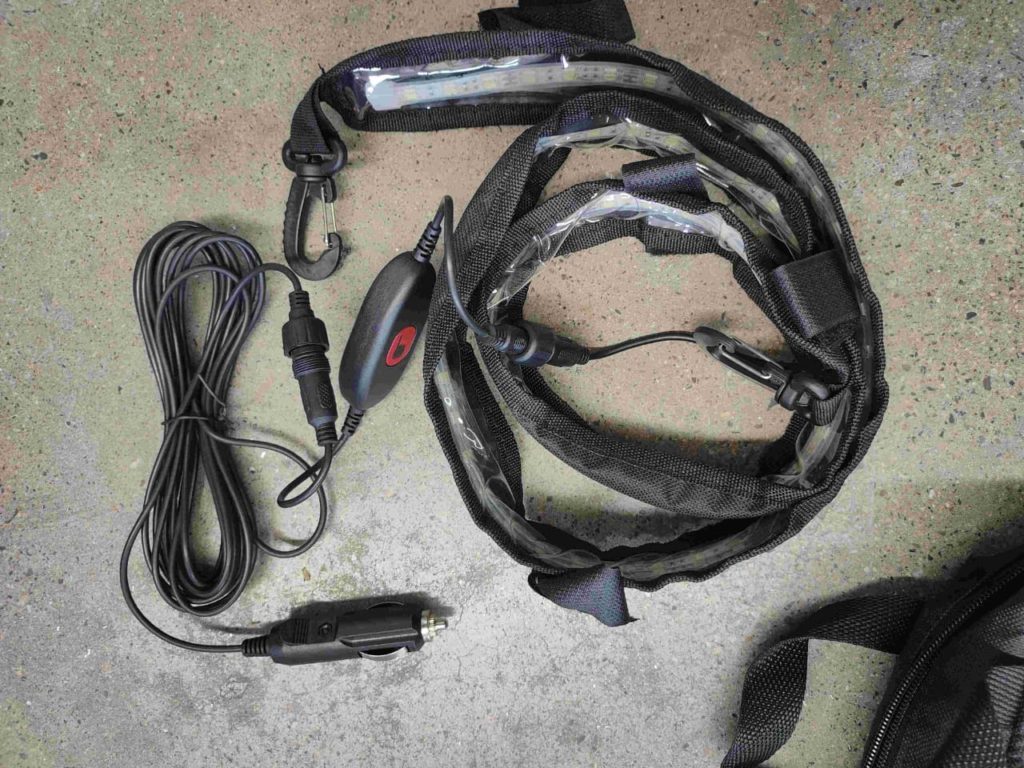
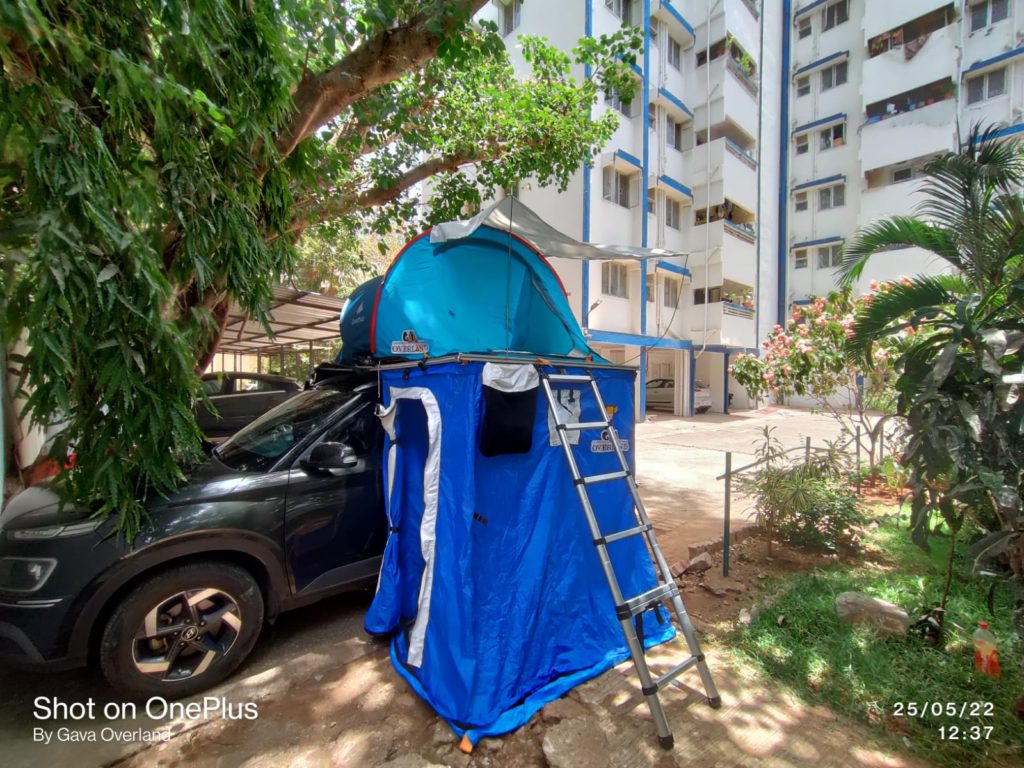
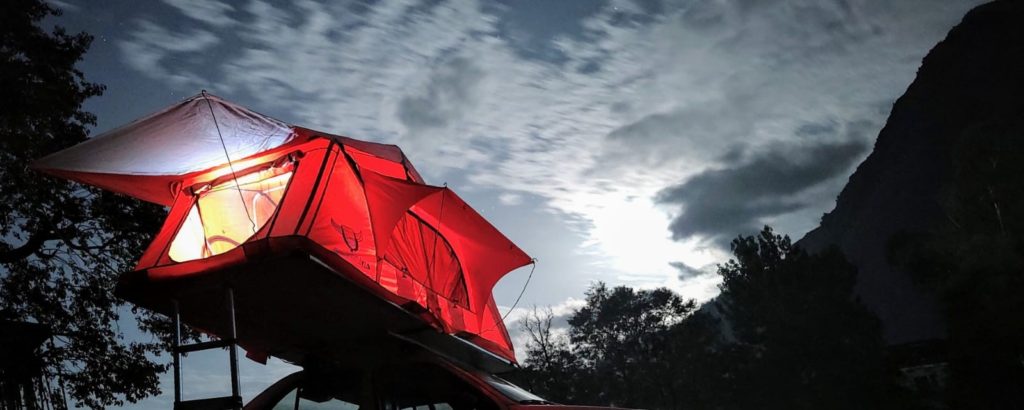
Conclusion
Many Car Roof Top Tents are available in the market for different needs at different prices. One needs to find the purpose and boundaries to decide upon the right solution for him and his vehicle to go camping. While choosing amongst those Safety, Capacity and comfort to be considered in that order.
Ready Reckoner
Following are a few combos of cars and suitable tents. For more information whatsapp us at 9420054143. Happy Camping. Looking to cathc up with you at the camp.
| Base Vehicle | 2/3 People | 3/4 people | 4/5 People | |
| 1 | Mahindra Thar | Gava Overland Hermit Classic Machi | Gava Overland Hermit Classic Long with Annexe | – |
| 2 | Mahindra Bolero | Gava Overland Hermit Classic Machi | Gava Overland Hermit Classic Long with Annexe | – |
| 3 | Mahindra Scorpio | Gava Overland Hermit Classic Machi | Gava Overland Hermit Classic Long with Annexe | – |
| 4 | Tata Safari (Old) | Gava Overland Hermit Classic Machi | Gava Overland Hermit Classic Long with Annexe | – |
| 5 | Force Gurkha | Gava Overland Hermit Classic Machi | Gava Overland Hermit Classic Long with Annexe | – |
| 6 | Mahindra XUV 500 | Gava Overland Hermit Classic Machi /Gava Overland Hermit Shell | Gava Overland Hermit Classic Long with Annexe | Gava Overland Advanta |
| 7 | Tata Harrier /Safari | Gava Overland Hermit Classic Long | Gava Overland Hermit Shell | Gava Overland Advanta |
| 8 | Isuzu V cross | Gava Overland Hermit Shell | Gava Overland Hermit Classic Long | Gava Overland Advanta |
| 9 | Toyota Fortuner | Gava Overland Hermit Shell | Gava Overland Hermit Classic Long | Gava Overland Advanta |
| 10 | Ford Endeavour | Gava Overland Hermit Shell | Gava Overland Hermit Classic Long | Gava Overland Advanta |

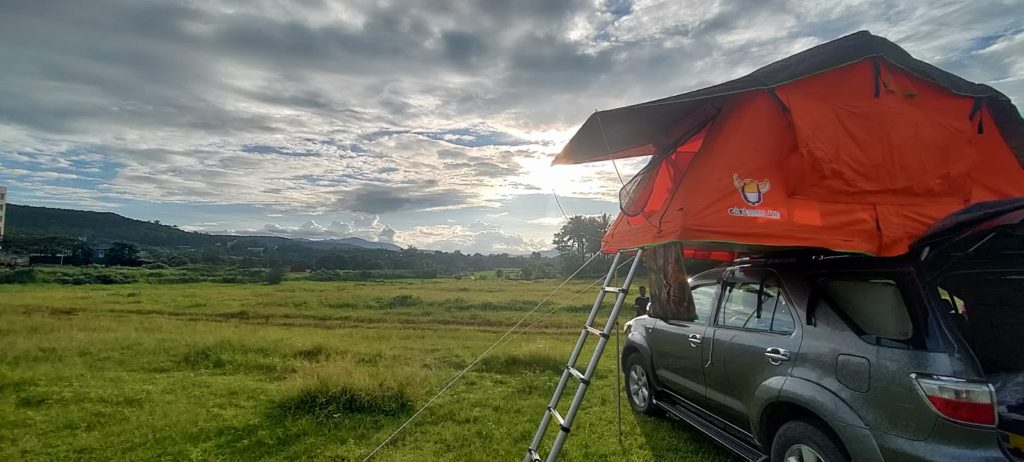
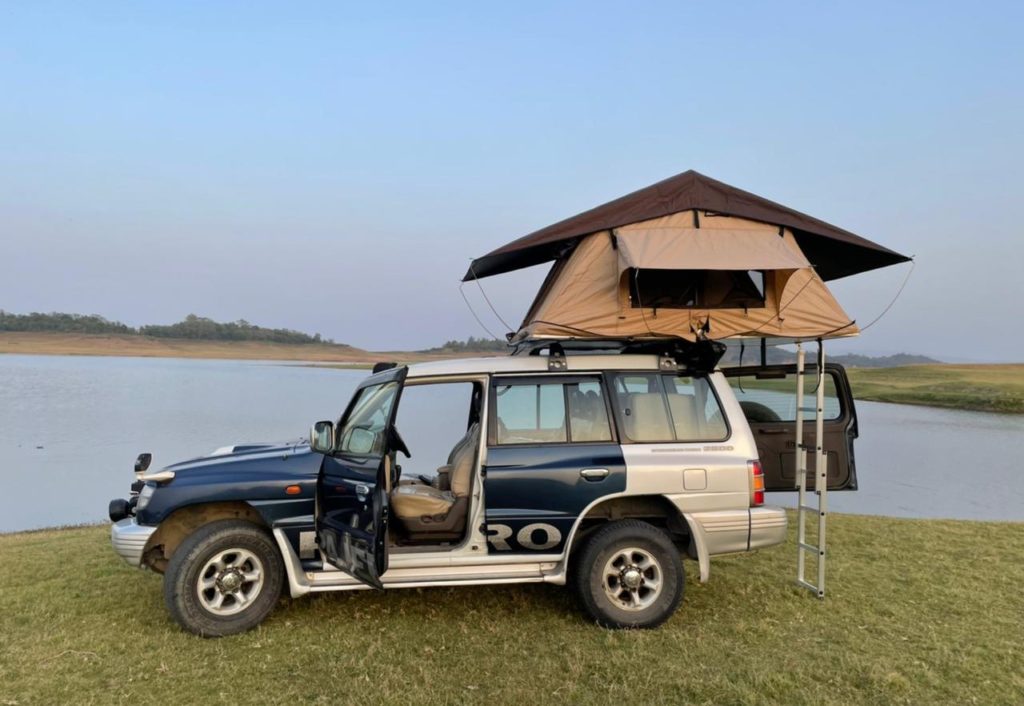
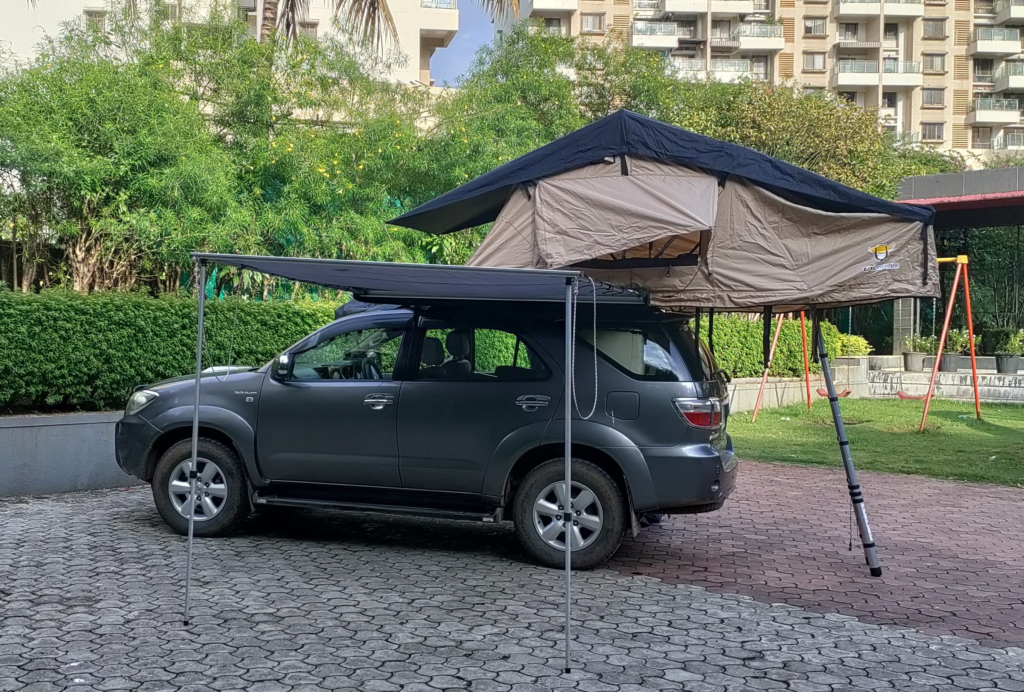
Hello Sir
Is there any tent available for Wagonr?
Thanks
Yes. with load-rated roof bars specific for the car, you can get a tent for your Wagon-R.
Needed for hardtop Thar 2021 for 2/3 persons
Yeah. For your Thar 2021 Classic Machi is a great product for 2 people. You will need a roofrack to mount the same.